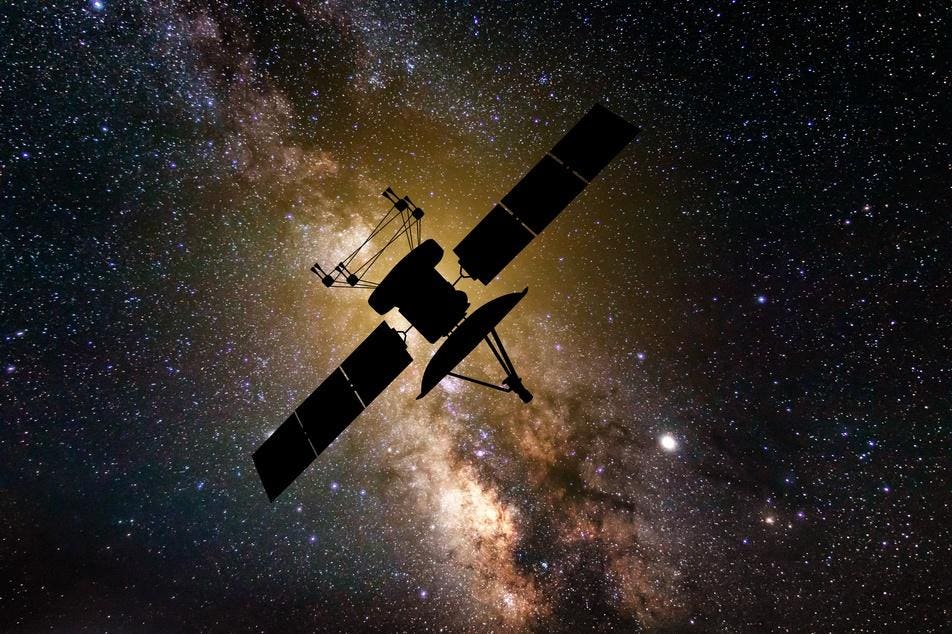Reema Khan – Founder | CEO – Green Sands Equity.
The real revolution in the space economy isn’t rockets. I believe it’s the profound shift to systems-level thinking, unlocking previously unimaginable opportunities. Space has long captivated humanity’s imagination, symbolizing the ultimate frontier of exploration. Yet today’s space economy transcends rockets and astronauts. I see rockets as the railroads of the 21st century, but the true value lies in the infrastructure and applications they enable.
With a shift in our vantage point, the space industry is unveiling a systems-level change in how we understand our world, culture and future. Those who recognize the untapped trillion-dollar potential in this industry will lead this shift in human progress.
The evolving ecosystem offers distinct opportunities across upstream, midstream and downstream sectors—each providing unique avenues for investors. However, there are also important risks for investors to consider. This is something I’ve seen firsthand, both as an investor in this industry and as an advisor to the chairman of a private space infrastructure developer. As space shifts from government dominance to public-private collaboration, new interdependencies are emerging and altering traditional interactions, driving competitive innovation and prompting a broader perspective of space as a shared strategic domain.
This is where I believe systems thinking comes in. This is an approach that emphasizes the interconnections among parts of a system rather than viewing each part in isolation. It recognizes that real innovation—and value—comes from understanding the relationships and emergent behaviors created by these interactions. Investors who adopt systems thinking when approaching the space economy can enhance their ability to understand and influence outcomes.
Breaking Down The Space Economy
1. Upstream: The Launch And Manufacturing Frontier
The upstream sector covers the design, manufacturing and launch of space assets. Reusability and innovative engineering from companies have helped reduce launch costs. These breakthroughs have made access to space more affordable, laying the groundwork for commercialization.
However, as I see it, rockets and payloads capture headlines but remain merely vehicles; they’re not value creators. Like the 19th-century railroad industry—where true economic transformation stemmed from cities and industries enabled by railroads—rockets are infrastructure enabling a larger economic ecosystem.
2. Midstream: The Infrastructure Enabling Space Commerce
The midstream sector manages, maintains and facilitates space-based assets, including space stations, in-orbit services and data relay infrastructure. This is where I expect the most profound paradigm shifts will emerge and reshape our understanding of science, culture and even human governance.
Midstream innovation is opening new frontiers in biotech and materials science. In microgravity environments, chemicals behave differently than on Earth, which creates opportunities for pharmaceutical research, next-generation materials and bioengineering. For example, microgravity conditions aboard the International Space Station facilitated the growth of higher-quality protein crystals, enhancing drug design for diseases such as Duchenne muscular dystrophy. With commercial space stations on the horizon, biotech firms could unlock treatments and technologies previously unimaginable in terrestrial labs.
Additionally, midstream infrastructure is vital for deep space exploration. Private-sector involvement will likely play a significant role in future missions to the moon, such as Artemis III, as well as Mars and beyond.
3. Downstream: The Real-World Applications Of Space Data
Downstream applications demonstrate how space data is used for decision-making across industries. Space-based insights have extensive applications:
• Defense And National Security: Data from space is used to enhance surveillance capabilities, precision targeting and rapid threat assessment through AI-enabled analytics, reshaping military strategy and responsiveness.
• Economic And Population Analytics: Geospatial insights into demographic shifts, infrastructure growth and economic trends, when paired with AI-powered predictive modeling, can guide strategic investment decisions.
• Insurance And Disaster Response: Using AI to analyze satellite imagery can help insurers assess claims for damage from events like floods or storms.
• Climate And Agriculture: Data from satellites can also boost weather prediction accuracy, optimize agricultural yields and monitor deforestation, which can equip policymakers with critical sustainability tools.
Midstream And Downstream Markets: Opportunities And Risks
For investors, I believe the real opportunity lies in midstream and downstream markets, which can offer scalable, high-margin applications with diversified revenue streams.
Midstream infrastructure investments, such as private space stations and in-orbit servicing, will be pivotal to the next era of space commercialization. I expect these assets to serve as biotech labs, manufacturing centers and staging points for deep space missions. The companies building and operating this infrastructure will have a first-mover advantage in shaping the future of human presence in space.
However, the midstream space sector requires substantial capital expenditures and remains heavily reliant on government contracts until commercial markets mature. The use of the midstream sector, specifically space stations, will take time, but I expect applications in this area to grow even beyond what we fathom today. To succeed, companies will need to diversify revenue streams. Similarly, satellite networks will need to reach a critical scale to sign contracts with terrestrial data and telecom providers.
Meanwhile, downstream applications may offer more immediate, tangible returns. Unlike the capital-intensive upstream sector, downstream ventures have lower technological risk and shorter paths to profitability. As data from space becomes increasingly commoditized, I’m anticipating downstream firms to experience rapid scaling and market penetration. Yet, as this segment becomes increasingly crowded, investors must critically assess each company’s unique value proposition—often found in creatively integrating terrestrial metrics with space-derived data.
A Cultural And Economic Paradigm Shift
Investing in the space economy is about reshaping human culture and systems, not just financial returns. Facing the immense void and inherent dangers of space demands new collaboration, innovation and relational logic, driving an emergent cultural perspective fundamentally different from terrestrial norms. In today’s world, I believe the space economy offers a rare arena for cross-border collaboration and innovation, as it is no longer just governments’ domain but also has a strong influence from the private sector’s focus on commerce.
Like the early internet, the space economy is laying foundations whose full potential remains untapped. Investors must embrace a systems-level mindset. By adopting this holistic viewpoint, investors can position themselves not only to profit but also to profoundly shape our world’s future, leveraging insights and relationships uniquely visible from the vantage point of space.
The information provided here is not investment, tax or financial advice. You should consult with a licensed professional for advice concerning your specific situation.
Forbes Business Council is the foremost growth and networking organization for business owners and leaders. Do I qualify?
Read the full article here











